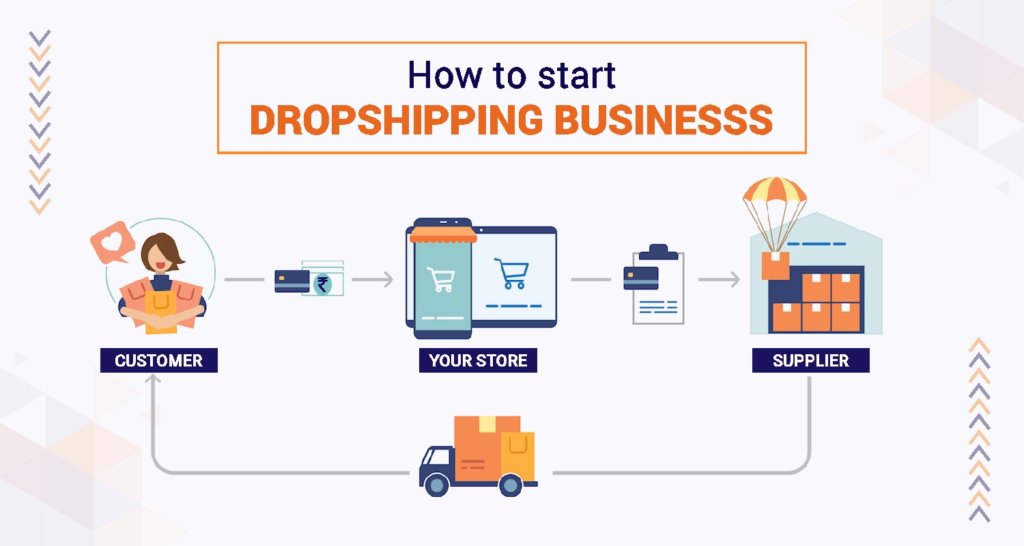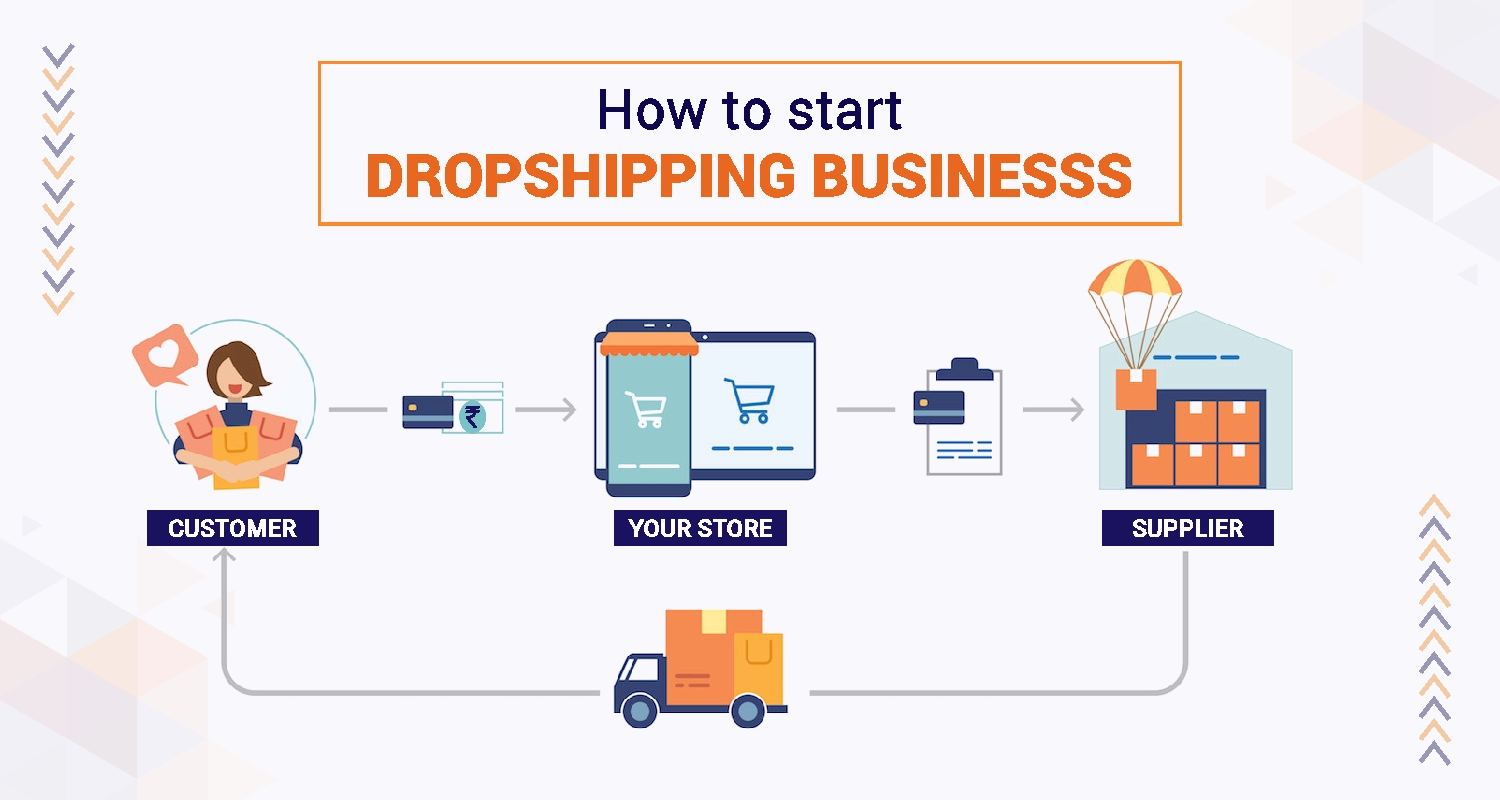The eCommerce landscape is constantly evolving, and dropshipping remains one of the most popular ways to start an online business with low upfront costs. If you’re considering launching your own dropshipping store in 2025, you’re in the right place. This guide will walk you through everything you need to know, from understanding dropshipping to finding suppliers, setting up your store, and scaling your business. Let’s dive in!

What is Dropshipping?
Dropshipping is a business model where you sell products online without holding inventory. When a customer places an order on your store, you purchase the product from a supplier who ships it directly to the customer. As the seller, you never have to deal with inventory, packaging, or shipping. This makes dropshipping a low-risk and highly scalable business opportunity, especially for newcomers in 2025.
Why Dropshipping in 2025?
As we move into 2025, dropshipping is still a relevant and profitable way to get started in eCommerce. Here are some reasons why:
- Low Startup Costs: Traditional retail businesses require significant upfront investment in inventory and warehouse space. With dropshipping, you don’t need to invest in stock, which keeps costs low.
- Global Reach: Thanks to online platforms and suppliers, you can sell to customers worldwide, opening up your business to a global market.
- Scalability: Dropshipping allows you to scale quickly since you don’t have to manage inventory or deal with fulfillment processes.
- Variety of Products: You can offer a wide variety of products without worrying about storage or excess stock.
Steps to Start a Dropshipping Business in 2025
Starting a dropshipping business involves several steps. Below is a detailed roadmap to guide you through the process:
1. Choose Your Niche
The first step in starting a successful dropshipping business is selecting a niche. Your niche will define your target audience and the types of products you sell. Here are a few tips for picking the right niche:
- Passion & Knowledge: Choose a niche you are passionate about or have expertise in. This will help you connect with your audience and stay motivated.
- Market Demand: Use tools like Google Trends, Amazon Best Sellers, or social media to gauge market demand and discover popular products.
- Competition: A niche with moderate competition can be a sweet spot. Too little competition might indicate low demand, while too much competition can make it harder to stand out.
- Profit Margins: Look for products with decent profit margins. Make sure that after all expenses (product cost, shipping, advertising), you still make a reasonable profit.
Popular dropshipping niches in 2025 include fitness equipment, eco-friendly products, smart home devices, pet accessories, and beauty products.
2. Find Reliable Dropshipping Suppliers
Your suppliers are the backbone of your dropshipping business. They will handle inventory, fulfillment, and shipping, so choosing the right ones is crucial. Here’s how to find reliable suppliers:
- Use Dropshipping Marketplaces: Platforms like AliExpress, Oberlo, SaleHoo, and Spocket allow you to connect with dropshipping suppliers quickly.
- Research Suppliers: Look for suppliers with good reputations, fast shipping times, and quality products. Read reviews, ask for samples, and ensure they provide excellent customer service.
- Automation Tools: In 2025, there are many tools and apps that can automate the dropshipping process. Use platforms like Shopify or WooCommerce combined with automation tools like Oberlo or AutoDS to streamline your operations.
3. Create Your Online Store
Now that you’ve chosen a niche and found suppliers, it’s time to set up your dropshipping store. In 2025, creating an eCommerce website is easier than ever, with many platforms offering user-friendly tools for building and customizing your store. Here’s how to get started:
- Choose an E-Commerce Platform: The most popular platforms for dropshipping include Shopify, WooCommerce, and BigCommerce. Shopify is beginner-friendly and offers built-in dropshipping tools, while WooCommerce is highly customizable and works well if you already have a WordPress site.
- Pick a Domain Name: Choose a unique and memorable domain name that reflects your brand and is easy to type and remember.
- Design Your Store: Customize your store’s theme to make it look professional and user-friendly. Most eCommerce platforms offer ready-made templates that are easy to adjust. Focus on simplicity, intuitive navigation, and a mobile-friendly design.
- Add Product Listings: Import products from your suppliers and write compelling product descriptions. Ensure your descriptions are SEO-friendly and optimized with relevant keywords. Use high-quality product images to showcase the products.
- Set Up Payment Gateways: Integrate payment gateways like PayPal, Stripe, or Credit Card to allow customers to make payments securely.
4. Optimize for SEO and User Experience
To stand out in a crowded market, optimizing your dropshipping store for SEO is essential. Here’s how to improve your store’s SEO in 2025:
- Keyword Research: Use tools like Google Keyword Planner or Ubersuggest to find keywords related to your niche. Include these keywords in your product titles, descriptions, and blog content.
- Optimize Product Pages: Write unique product descriptions, use alt text for images, and ensure your pages load quickly. A faster website provides a better user experience and ranks higher on Google.
- Content Marketing: Start a blog on your website and publish relevant, high-quality content. This helps with SEO, builds trust with your audience, and drives organic traffic to your site.
- User Experience (UX): Make sure your website is easy to navigate, with clear calls to action, fast checkout processes, and a mobile-friendly layout.
5. Market Your Dropshipping Store
Marketing is key to attracting customers and generating sales. In 2025, effective digital marketing strategies can significantly grow your dropshipping business. Consider the following:
- Social Media Marketing: Platforms like Instagram, TikTok, and Facebook are ideal for eCommerce marketing. Create engaging content, run ads, and leverage influencer marketing to reach your target audience.
- Paid Advertising: Use Google Ads, Facebook Ads, or Instagram Ads to target specific audiences and drive traffic to your store. These platforms offer advanced targeting options that allow you to focus on your ideal customers.
- Email Marketing: Build an email list and use tools like Mailchimp or Klaviyo to send newsletters, promotional offers, and product recommendations to your subscribers.
- Affiliate Marketing: Partner with bloggers or influencers in your niche to promote your products and offer them commissions on sales. This can help you reach new customers through trusted voices.
6. Focus on Customer Service and Retention
Providing excellent customer service is vital for success in the dropshipping business. Happy customers are more likely to become repeat buyers and refer others to your store.
- Respond Quickly: Use live chat tools like Tidio or Zendesk to offer real-time support. Respond to customer queries promptly and professionally.
- Offer Hassle-Free Returns: Have a clear and fair return policy in place. A good return policy builds trust and reduces customer concerns about making a purchase.
- Create a Loyalty Program: Reward repeat customers with discounts, free shipping, or exclusive offers. This will help increase customer retention and long-term profitability.
7. Scale Your Dropshipping Business
Once you start making sales, it’s time to scale your business. Here’s how to take your dropshipping business to the next level in 2025:
- Expand Product Range: Analyze your sales data to identify your best-performing products, and add similar items to your store to attract a larger audience.
- Outsource Tasks: As your business grows, consider outsourcing tasks like customer service, marketing, and order fulfillment. This will free up your time to focus on strategy and growth.
- Automate Operations: Use automation tools for order processing, inventory management, and customer service to streamline your operations.
Conclusion
Starting a dropshipping business in 2025 offers tremendous opportunities for entrepreneurs willing to put in the work. By following the steps outlined above—choosing a niche, finding reliable suppliers, setting up a professional online store, and marketing effectively—you can build a successful dropshipping business from scratch. Focus on providing excellent customer service, staying ahead of trends, and continually optimizing your website, and you’ll be well on your way to creating a profitable eCommerce brand.
